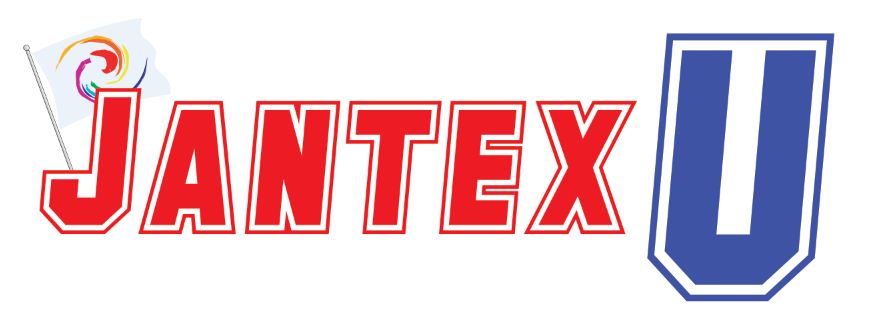 Loading... Please wait...
Loading... Please wait...Categories
Sign Up For Our Newsletter!
- Home
- Jantex U
Jantex U

A learning center designed to help you succeed.
1.) Can I use household cleaners to clean print heads?
Answer: We don't recommend using household cleaners. They can contain heavy metals, solvents or an improper pH for your inks. Inkjet cleaners are designed specifically for your head & ink technology. Read Printwear's Q&A
2.) How do I create screens for discharge printing?
Answer: Read Murakami's newsletter or Printwear's Q&A
3.) What is the difference between direct printing polyester versus dye sub printing?
Answer: Each has its own advantage. Usually printing directly onto polyester is more suited to flag and banner manufacturers where the ink needs to penetrate to the back side of the material. The advantage is no wasted paper, the disadvantage is it consumes more ink than paper sublimation and colors are generally not as vibrant. Paper sublimation is more suited for garment and home furnishings. The advantage is the ability to print at higher speeds and achieve greater detail and color pop, the disadvantage is the additional cost in paper.
4.) Do I need a RIP for printing film positives?
Answer: Generally the answer is YES. If you only to spot color seperations, you maybe able to get away without a RIP. For halftone printing, a RIP allows you to preserve your halftone dots by bypassing the printer driver and keeping your images from being dithered. A RIP also adds workflow, more density controls and printer options. Is Wasatch the RIP for you? Ask us to find out!
5.) Why is my waterbase/discharge ink washing off?
Answer: 2 possible reasons. First and most common is lack of proper curing. We recommend 320° F for a minimum of 2 minutes in a forced air dryer. REMEMBER, it's not the time in the dryer, but the time it takes for the ink to get to temperature. Second, lack of binder can cause ink to wash or rub off. We suggest a 2:1 ratio of binder to pigment. Depending on your pigment, if you are using over 7% pigment, try adding Jantex Binder 45NRF.
6.) Are Waterbase & Discharge Inks PVC Free?
Answer: Yes! Waterbase & Discharge inks contain no PVC since they are based on water. Additionally, they are phthalate and lead free. Jantex Inks products are certified to be phtalate free, heavy metals compliant and G.O.T.S. certified. Contact us for more information.
7.) Can you point me to more information on Discharge Printing?
Answer: Check out these articles below.
Dare to Go Discharge by Printwear Magazine
8.) What is the optimal time & temp for transfering dyesub inks?
Answer: Dye sublimation dyes will tranfer most sucessfully at 400° F (204 C). Lower temperatures can be used, but wash fastness should be tested. Dwell time can be between 30-60 seconds depending upon the substrate. Testing should always be done prior to production!
9.) What is a color profile and how does it affect my prints?
Answer: A color profile describes the "color space" a device can print and how to correctly adjust for colors that fall out of the device's printable capability. For more information, check out the following link.
http://dpbestflow.org/color/color-space-and-color-profiles
Use of any information on this page is at your own risk. Always test prior to production. Jantex makes no warranty, express or implied to the use of this information.